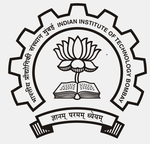Electronics Lab - 1: Basic Electronics
Prerequisites for this lab
- EE-112 Introduction to Electronics (DIC-2 in Department of Electrical Engineering)
- Basics passive components: R, L, C.
- Basics of transistors. Either BJT or FET is fine: the experiments can be performed with either of them.
Syllabus
- Introduction to lab instruments using simple circuits: power source, multimeter, function generator, digital oscilloscope.
- Voltage Sources, Current Sources and the difference between them
- Impedance matching of signals between analog instruments and components. Power transfer.
- Generic I-V characteric determination using differential signals: resistor and diode I-V. Measure non-linearity of resistance with amplitude & frequency
- Diode applications: rectifier, clamp, limiter, coupler
- Transistors: measurement of BJT I-V characteristics
- Transistor biasing: Voltage divider, Emitter stabilized, Collector-Base feedback
- Transistors: BJT CE amplifier (voltage amplifier)
- Transistors: Emitter follower design (current amplifier)
- Transistors: Two stage amplifier with or without feedback (for example Darlington pair)
Items 6 to 9 can be performed with a combination of BJT and/or FET. It is useful to stick with one of the two to maintain smooth flow of the concepts.
Representative experiments
Note: The assignments are set up in modular form. Students fill out answers in the provided space.
Marks are alloted by the teaching assistants as they complete each module. At the end of the session the students submit
the completed assignment and the marks are entered into a spreadsheet by the lab staff. There is no journal writing/correction required.
Close to the end-semester exam, the solved assignments are put up on Moodle for students to revise.
There is an element of surprise as the students don't know the exact problem they will work on when they arrive for a lab session.
They are given a review of the concepts involved in the preceding lecture. Hence it is important to co-ordinate the timetable such
that the lecture session occurs a few days before the lab session.
Discussion among the members of each group is encouraged during the lab session. The teaching assistants are required
to invigilate such discussions and mark the completed work based on the perceived contribution of the student to the group's work.
You are free to add new components to the experiments or suggest new experiments. When editing these assignment sheets, it
is suggested that you use MS Word 2010 on MS Windows. Unfortunately using other word processors or other OS
(Linux LibreOffice, MacOS Word etc) causes unwanted changes in the alignment of figures in the page layout.
Hence system agnostic PDF files are also provided.
Links labelled 'P' correspond to the problem assignment sheets, those labelled 'S' correspond to the suggested solutions. The format
of the lab requires the TA's to come in a few hours before the lab to fully solve the assignment and understand the solutions since
they are required to mark the students' work in the lab session. Each TA may be given a copy of the solution sheet which must be
kept concealed from the students (obviously).
| No. | Experiment | docx | |
|---|---|---|---|
| 1 | Power sources: voltage and current source | P | P |
| 2 | Active diode circuits | P, S | P, S |
| 3 | Technique for automated I-V device characterization (This requires floating differential signal input) | P, S | P, S |
| 4 | BJT as switch | P | P |
| 5 | BJT I-V characterization | P, S | P, S |
| 6 | Common Emitter (CE) amplifier without feedback | P, S | P, S |
| 7 | CE amplifier with emitter feedback to stabilize gain | P, S | P, S |
| 8 | CE amplifier with collector feedback stabilized bias | P, S | P, S |
| 9 | Emitter follower: current amplification | P, S | P, S |
| 10 | Current mirror | docx |
Lecture notes
The lectures must be focused on the content of the experiments you plan to proceed with during the semester. This a collection of lecture notes used to highlight some of the core concepts.
| No. | Title | pptx | |
|---|---|---|---|
| 1 | Introduction | ppt | |
| 2 | Voltage and Current sources | ppt | |
| 3 | Diodes and their applications | ppt | |
| 4 | Stray effects in active devices | ppt | |
| 8 | BJT Common Emitter amplifier review | ppt | |
| 9 | Comprehensive review of BJT: biasing, feedback and gain. | ppt |
Exam assignments
This is a collection of exam assignments given in the course over the last few years. Due to space constraints, the exam must be
conducted in two sessions so that each student is able to complete the assignment individually. Early on in the course, it must be
stressed that while the students work in groups and learn from each other during the semester, they must appear for the endsem exam
individually. This motivates them to learn all aspects in each lab assignment - problem solving, circuit design and
breadboard circuit building.
The exam assignments listed here are in pairs - each pair of assignments are of approximately equal difficulty level, so that they can
be administered to two halves of the same class.
| No. | Title | pptx |
|---|

Contact:
Room 130,
Department of Physics,
IIT Bombay
Powai, Mumbai 400 076
Tel: +91-22-25764590
Lab staff:
Nitin Pawar
nitinpawar[at]iitb.ac.in
Swapnali Gharat
swapnalig[at]iitb.ac.in
Snehal Narvekar
narvesnehal[at]gmail.com
Lab-Incharge:
Pradeep Sarin